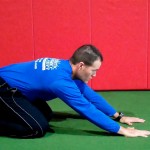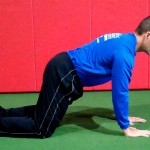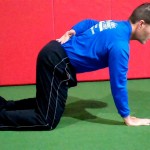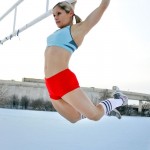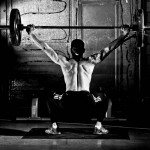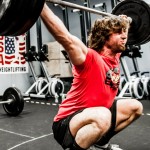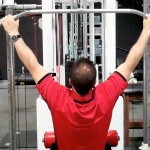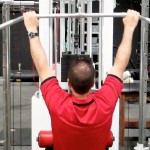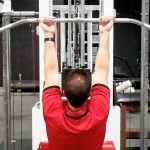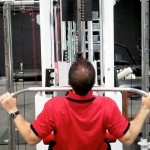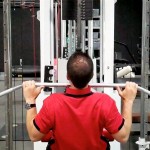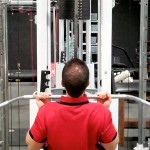Brian Schiff’s Blog
Injury Prevention, Sports Rehab & Performance Training Expert
Research along with years of observation has taught me that the brain is inherently looking for the most efficient way (aka least effort) to execute movement in life. In addition, it HATES pain just like you and I so it does everything possible to avoid it including ordering the body to perform dysfunctional movement patterns.
After a painful episode, the brain often needs reminded that the body can go back to the proper movement patterns once the pain is gone. However, it often holds that painful memory and may by default lean toward a faulty movement pattern. This protective mode then ends up perpetuating a faulty movement pattern that is no longer necessary nor efficient. Over time, dysfunctional movement patterns can create further stress or harm to other segments in the kinetic chain.
So, I am always seeking ways to stimulate the body to work properly and exercises that facilitate proper neuromuscular patterning are instrumental in my rehab and training. I wanted to share two exercises that I like to utilize in my rehab and training for the shoulder. In particular, I like to employ closed chain activity to stimulate the serratus anterior as well as the other scapular stabilizers.
Below are two exercises I wrote about in my “Functionally Fit” column for PFP magazine. The first exercise shows quadruped rocking. Shirley Sahrmann mentions this in her work, Diagnosis and Treatment of Movement Impairment Syndromes. I began using it after reading her book, and I agree that it works very well for scapular dysfunction. Below is the start and finish position for the quadruped version as well as my own advanced tripod version of the exercise.
- Quadruped start
- Quadruped finish
- Tripod finish
For a complete explanation of the exercise and its application, click here to read the column.
As a follow-up to this exercise, I included an unstable progression I like to employ using the BOSU trainer. I call this the unstable tripod scapular clock. It can be done on the knees or up on the toes. I have included a quick video on this below. Again, I like this exercise for scapular work as well as core stability training.
Click here to read my PFP column on this exercise for the full description, application and regressions. The real beauty of this last exercise is the “big bang for your buck” attributes since it hits shoulder, core and hip stability all at once for those able to work at that level. I hope it works as well for you as it has for me!
So, I treat a number of fitness enthusiasts in the clinic and many include Crossfit clients. Recently, I evaluated a 38 y/o male on 2/16/12 with a 3 month history of right shoulder pain. He performs Crossfit workouts 6 days per week. His initial intake revealed:
- Constant shoulder pain that worsens with overhead movements
- Pain with bar hangs, overhead squats and wide grip snatches
- Unable to do kipping (only doing strict form pull-ups)
- Pain if laying on his right side at night
- No c/o neck pain, referred pain or numbness/tingling
Notice the shoulder position during the kipping pull-up and overhead squat below. This is a position of heightened risk for the shoulder.
His exam revealed the following:
- Normal range of motion
- Strength within normal limits except for supraspinatus and external rotation graded 3+/5 with pain
- Positive impingement signs
- Negative shrug sign
- Negative Speed’s and O’Brien’s test
- Tender along distal supraspinatus tendon
Based on the clinical exam, it was apparent he had rotator cuff inflammation and perhaps even a tear. Keep in mind he had not seen a physician yet. I began treatment focused on scapular stabilization and rotator cuff strengthening as well as pec and posterior capsule stretching to address the impingement. Ultrasound and cryotherapy were used initially to reduce pain and inflammation.
One month following the eval
By 3/14/12, his pain was resolved with daily activity and he had returned to snatches and push-press exercises without pain. He still could not do overhead squats with the Olympic bar pain free, but he could with a pvc pipe. Strength was now 4/5 for supraspinatus and 4+/5 for external rotation. All impingement tests were now negative as were Speed’s and O’Brien’s testing.
One of the most common issues I see in the clinic with active exercise enthusiasts between the age of 20 and 55 is shoulder pain. Weightlifting has been popular for ages, but Crossfit is all the rage these days. Both disciplines involve overhead lifts. The key thing to remember when performing overhead repetitive lifts is how load and stress not only affects strength and power, but how it impacts the joint itself.
Pull-ups and pull-downs are staples for most clients I see. As a therapist and strength coach, I am always thinking and analyzing how variables such as grip, grip width, arm position, scapular activation, trunk angles etc influence exercise and how force is absorbed by the body. One such exercise I have spent time studying and tweaking is the lat pull-down.
Consider for a moment how width and grip impacts the relative abduction and horizontal external rotation in the shoulder at the top and bottom of the movement in the pictures below (start and finish positions are vertically oriented):
It should be common knowledge for most, but I will state it for the record anyway – you should NEVER do behind the neck pull-downs. Beyond the horrible neck position, this places the shoulder in a dangerous position for impingement and excessively stresses the anterior shoulder capsule. A wider grip (be it with pull-ups, pull downs, push-ups) will always transfer more stress to the shoulder joint because you have a longer lever and greater abduction and horizontal external rotation.
So, what bearing does this have in relation to the rotator cuff and SLAP injuries? For more information and details on the application of the grip choice, click here to read the full column I did for PFP Magazine this month. Stay tuned for my next post (a follow-up to this one) one of my Crossfit patients who now only has pain with overhead squats and how my differential diagnosis and rehab has led me to conclude what is wrong with his shoulder. Keep in mind we must learn to train smarter so we can train harder and longer without pain and injury. Biomechanics and understanding your own body really does matter.
Dysfunctional movement is common with shoulder pain and impingement. One dysfunction you may encounter is a downwardly rotated scapula. If upward rotation is limited, a client will display excessive shoulder flexion above 90 degrees when the humerus is in maximal internal rotation. Typically, a person will have minimal flexion beyond 90 degrees if the scapula is moving properly.
Upward rotation of the scapula is the result of a force couple between the upper and lower trap along with the serratus anterior. If any of these muscles are weak, rotation can be limited and overpowered by the rhomboids and levator scapulae muscles (both downward rotators). This pattern of muscle dominance is common.
Additionally, tightness in the rhomboids, levator scapulae, pec minor or latissimus can also restrict normal mobility. It is probably safe to assume stretching of the chest and lats would be helpful, but it is critical to encourage the proper muscle firing patterns in the traps and serratus anterior as well.
Below is a video demonstrating wall slide shrugs. The shrug should be done at or above 90 degrees. You can perform reps at multiple angles or move to end range and perform a series there.
Application: The exercise is designed to encourage upward rotation in a more functional manner as opposed to traditional shrugs with the arms at the side. While I am not opposed to traditional shrugs with little or no weight for basic elevation, this position generally tends to activate the rhomboids and levator scapulae which is not desired given their natural dominance pattern.
The wall slide shrugs should not create any pain or discomfort. However, they may feel awkward particularly if the client has a faulty muscle activation pattern. As muscle tightness resolves and strength improves, clients should gain more mobility and optimal shoulder function.
By far the most common problem I see in the clinic is shoulder pain. Most of the time it is related to overuse, rotator cuff tendonitis/impingement and labral tears. Because we are geared more toward sports rehab, I also treat a lot of overhead athletes (baseball players, volleyball players and swimmers).
A common thing I will see in those suffering from impingement or rotator cuff pain is scapular winging. Most of the time the muscle is simply deficient in strength/endurance and it along with the lower trap become overpowered by the upper trap, levator or even the rhomboids. Shortened scapulohumeral muscles, poor posture and pec tightness can also impact winging.
There are many traditional exercises such as serratus punches, push-ups with a plus, and serratus plank push-ups to name a few, but I wanted to include a closed chain exercise that can be very effective for facilitating proper activation of the serratus – quadruped rocking.
In the video, I show it with both hands fixed on the floor progressing to one hand (on the involved side). The key is quality of movement throughout. After you check out the video, be sure to scroll down and click the link to a full column I wrote for PFP magazine on this exercise as it further explains the technique and application.
Click here to read the online column for PFP Magazine.

